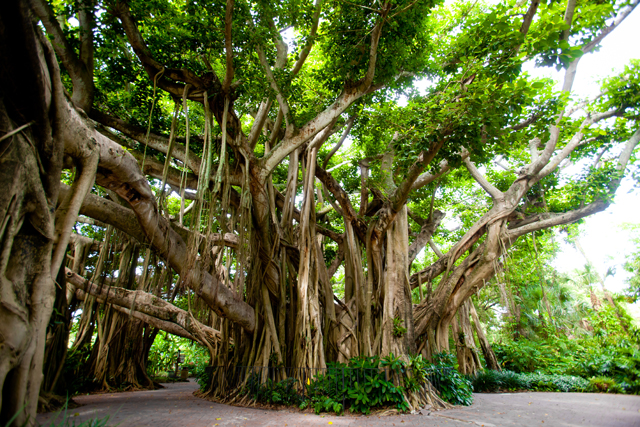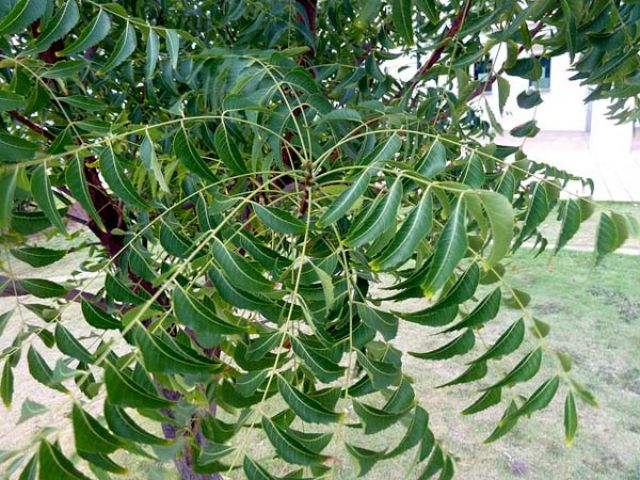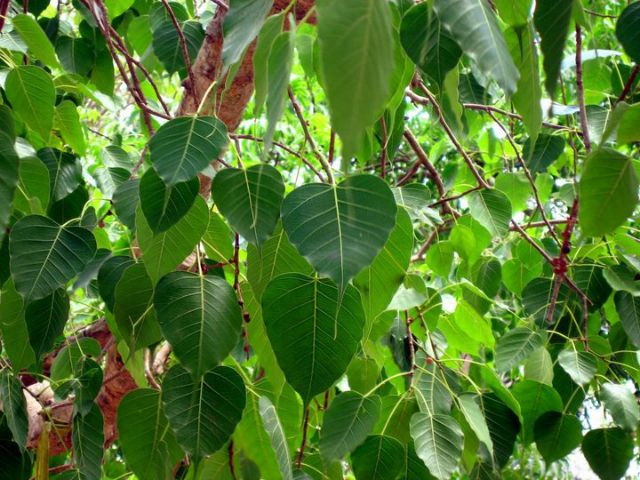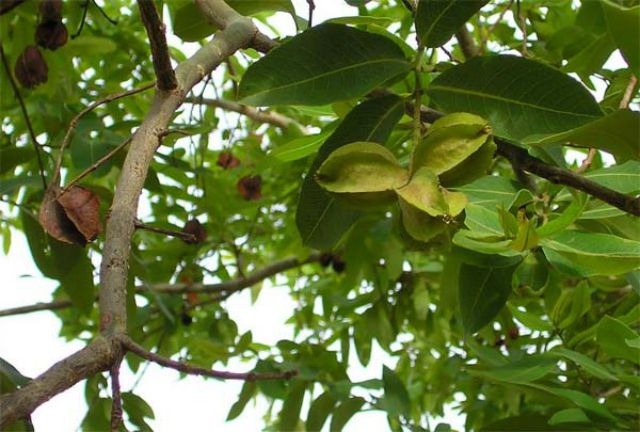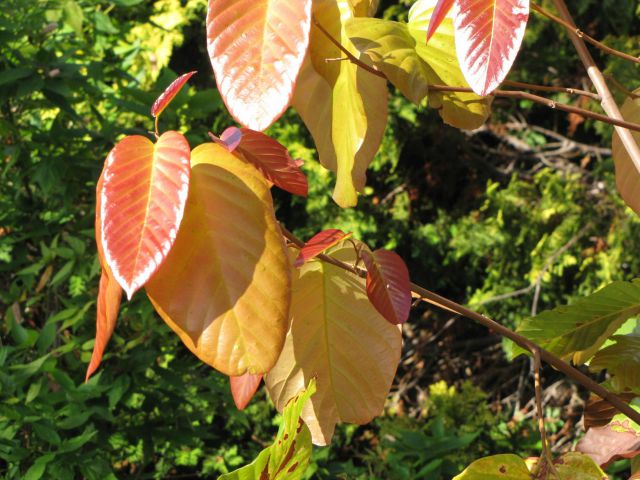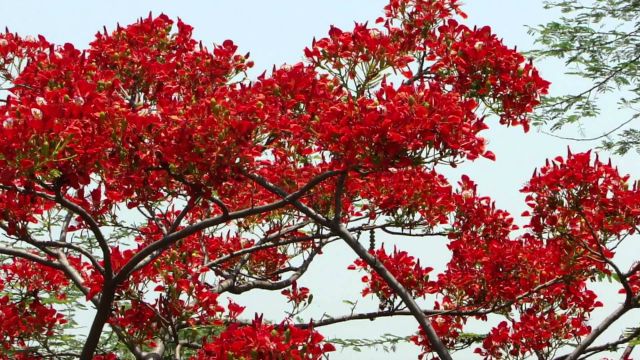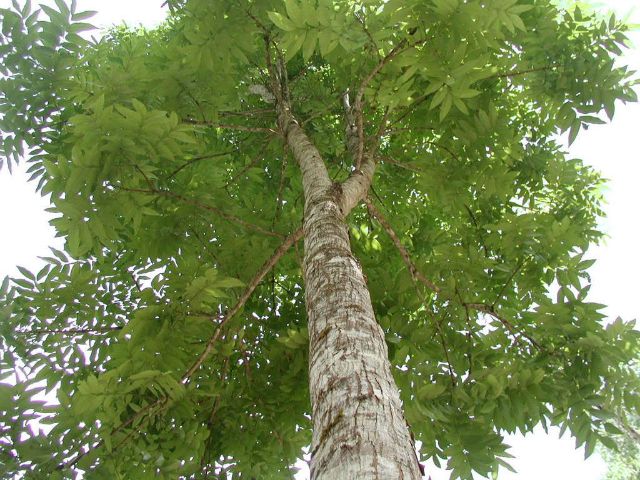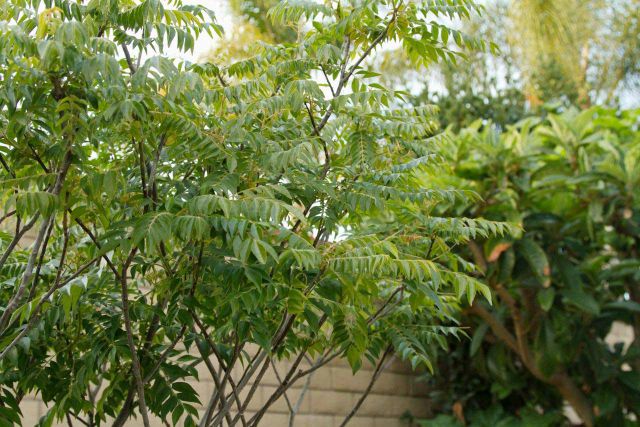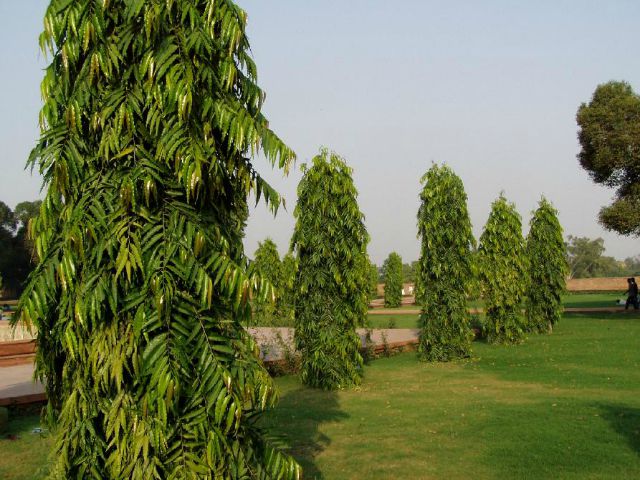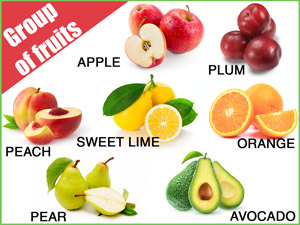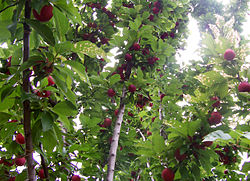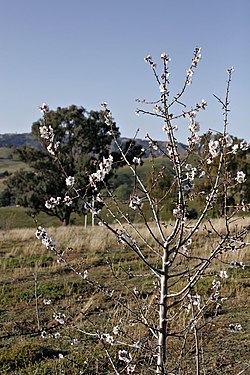Fruits are nature’s treasure or rather nature’s gift to human
beings. Fruits are the tastiest of all healthy foods. They are healthy
because they contain all the essential nutrients like vitamins, minerals
and sugar, that are required by human beings on a regular basis. Fresh
fruits, in their natural form, are also easy to digest, as compared to
nutritional supplements. Therefore, fruits can be consumed by people of
any age group.
When asked to define a fruit, most of us will
suggest that a fruit is that component of a plant which has a pulpy
flesh, which often tastes sweet, tangy, sour or even sharp. Secondly,
fruits have attractive colors and can be classified into different
types. However, in botany, a fruit is defined as the one that contains
seeds and is derived from a flower. Fruits, indirectly aid in
reproduction through the process of seed dispersal.
If you take a
look at the botanical definition of fruits, you will note that several
vegetables can also be categorized into the ‘fruit’ group. This is
indeed true. There are several vegetables that are botanically fruits.
However, here we have mentioned only those that can be traditionally
classified into the ‘fruits’ category. If you are looking for a list of
all fruits with pictures, then you are at the right place. Mentioned
below are the different kinds of fruits grown in the world.
*Click on the image to have an enlarged view
Fleshy Fruits
Fleshy
fruits, as the name suggests, have a soft pulpy wall, with seeds at the
center. They have a soft edible part in between their outer cover and
the seeds. This is a vast category of fruits and more than half of the
known fruits are categorized into this group of fruits. An apple or a
pear are excellent examples of fleshy fruits. It should also be noted
that other types of fruits like dried fruits, citrus fruits and melons
form a subpart of this larger group of fleshy fruits.
Mango Olive Papaya
Dried Fruits
Dried fruits are also categorized under the
fleshy fruits group. When we say dried fruits, we often think of
cashews, walnuts and almonds. However, apart from these, there are
several other fruits that can be categorized as dried fruits. In
simplest words, dried fruits can be defined as fruits that are dried
naturally or mechanically in order to remove their original water
content. Apart from the usual dried fruits (nuts and seeds), several
other fruits like apples, peaches, apricots, etc. are also dried and
used for culinary purposes.
Almonds

Brazil Nut
Cashews

Chestnuts

Dates

Fig

Hazelnut
Macadamia nuts

Prune

Pistachio

Raisin
Walnut

Citrus Fruits
Citrus
fruits are the ones that belong to the genus ‘Citrus’. They are acidic,
juicy and usually have a sharp taste. All citrus fruits are rich
sources of vitamin C which is required by the body to carry out
different functions. Citrus fruits also have detoxifying properties, and
hence, are used in some detoxification diet plans like the Master
Cleanse (lemonade diet).
Clementine

Grapefruit

Kumquat

Lemon

Lime

Mandarin

Minneola Tangelo

Orange

Pomelo

Sweety

Tangerine

Ugli

Melons
There
is a lot of debate on whether melon is a fruit or a vegetable.
Scientifically, a melon is a fruit (based on the definition mentioned
above). However, the confusion lies because of the fact that melons,
cucumbers, squash, etc. belong to the same family, i.e., gourds.
Watermelon, cantaloupe, etc. are examples of melons, which are
categorized as fruits. Melons are also classified into the broad
category of fleshy fruits because they have an edible pulpy flesh.
Cantaloupe

Honeydew

Squash

Watermelon

Multiple Fruits
Multiple
fruits are called so because they are developed from multiple flowers.
Every single flower produces a fruit, which is then assembled naturally
as a whole. Therefore, what we see as a whole fruit is actually a bunch
of fruits. One of the classic examples of multiple flowers is pineapple.
Some berries like the strawberry also belong to this category of
fruits.
Breadfruit

Jackfruit

Osage-orange

Pineapple

Berries
Berries
also belong to the larger group of fruits, i.e., fleshy fruits as they
have a pulpy flesh. However, scientifically speaking, berries are fruits
that have a pulpy flesh with one or more seeds embedded in it. In that
case, a tomato or a banana is also considered as a berry. Whereas, a
strawberry is not actually a berry because it has seeds on the outer
part of its cover. Berries are extensively used for culinary purposes.
Acai berry

Barberries

Bearberries

Blackberries
Blueberries

Boysenberries

Cranberries

Elderberries

Gooseberries

Grapes

Juniper berries

Kiwi

Raspberries

Red Currants

Salmonberry

Sea-buckthorn Berries

Strawberries

Miscellaneous Fruits
Here
are some miscellaneous fruits with pictures that can be categorized
into either of the above-mentioned categories. For e.g., the banana is a
fleshy fruit, while blackcurrant, crowberries and goji berries are
berries. The fruits mentioned here are native to only certain parts of
the world and are not grown all over.
Banana

Blackcurrant

Coconut

Goji berries

Passion fruit

Apart
from the list mentioned above, there are several other fruits found in
the world. Therefore, in order to have a full list of fruits, you can
also include fruits like bilberry, chokeberries, chokecherry,
cloudberry, hawthorn, huckleberries, Indian plum (jujube),
lingonberries, loganberries, marionberries, mulberries, nannyberry,
nectarines, ollaliberries, pomegranate, rhubarb, serviceberries,
tayberries, wild rose, etc. in the list. But, hundreds of varieties of
fruits are found on the Earth; and most of them are unknown as they are
grown only in native places. Therefore, compiling the complete list is
quite difficult.
This was an extensive list of fruits along with
their pictures. By and large, everyone loves fruits. They are healthy
and should definitely be included in the daily diet. Also, remember the
cliché, An apple (any fruit) a day keeps the doctor away!
http://www.thehindu.com/news/cities/Mangalore/mangalores-forest-department-nurseries-to-offer-saplings/article4742178.ece#!
Mangalore’s Forest Department nurseries to offer saplings

40 varieties of saplings available at Forest nurseries
If gardening is your hobby, you should be heading for the two nurseries of the Forest Department at Padil and Thumbe.
On offer are 40 varieties of saplings of flowering plants and fruit
bearing trees — from mango and jackfruit to gooseberries — all priced
between Rs. 2 and Rs. 20 per sapling for general public; and Re. 1 and
Rs. 5 for farmers.
The sale will begin immediately after monsoon sets in. This is
because the plants will have higher survival rates if planted in
monsoon.
Clifford Lobo, Range Forest Officer (RFO), Mangalore, told The Hindu
the department would also begin planting saplings on roadsides and
other available spaces to increase green cover. The saplings in the
nurseries have been grown keeping in mind the needs of both farmers on
outskirts of the city and people in the city.
He suggested that cherry, mahogany, devadaru and wild almond
are most suitable to the weather condition of the city. Of the flowering
varieties, he recommended kakke, peltophorum, renja, hole dasavala and
May flower.
The RFO said that people can purchase grafted mango saplings of
totapuri, alphonso, kalapadi, mallika, badam and totapuri varieties. “We
have 2,000 grafted saplings of mango,” he said.
The nurseries have saplings of wild jackfruit, which is on the
extinction, billvapatre, dhoopa, hunase, nagasampige, arali and the
like.
You can purchase kokum saplings, which are in much demand now. And if
you love nerale’ fruits (jamoon), the department has raised 1,250
saplings.
He said that honne is most suited for planting on the seashore side.
The department has raised 8,500 saplings of honne sapplings. People
living on the outskirts of the city can purchase saguvani (teak). The
department has 20,000 teak saplings. It can be planted for commercial
purpose on agriculture land. “We have 5,000 saplings of sandalwood,” he
said.
He said that mahogany is basically a Western Ghats species meant for
farmers. It grows tall and the timber can be used for commercial
purposes.
People may consult the department staff at the nurseries before purchasing the saplings.
The telephone number of the RFO is 2425167.
Avoid large trees
A botanist suggests that people in the city who have small holdings
(houses on five to 10 cents of land) can plant fruit bearing plants in
open spaces.
K.R. Chandrashekar, Professor, the Department of Applied Botany, Mangalore University,
said people can plant saplings of mango, sapota, guava, papaya, and
banana in their backyard. They could avoid saplings of large trees or
ornamental trees in backyard, he said.
https://www.uaex.edu/yard-garden/fruits-nuts/


Growing fruits and nuts in the home garden can be very rewarding since one gets to
eat “the fruits of their labor.” However, fruits and nuts require a very high level
of management, particularly in pest management.
Considerable attention should be paid to selecting and preparing the planting site,
choosing cultivars with local adaptation and pest resistance, and following pest and
cultural management practices
The University of Arkansas has a rich heritage in fruit breeding. The effort was begun
by Dr. James N. Moore, Distinguished Professor Emeritus in 1964. This effort continues
under the direction of Dr. John R. Clark, University Professor of Horticulture with
the Bumpers College of Agricultural, Food and Life Sciences at the University of Arkansas
at Fayetteville.
The University of Arkansas’ fruit breeding program has an emphasis on adaptability
to Arkansas’ climate. The program is based at the Arkansas Agricultural Experiment
Station’s Fruit Research Station in Clarksville, with testing of developments at the Southwest Research and Extension Center in Hope and the Arkansas Agricultural Research and Extension Center in Fayetteville. Results from the fruit breeding and fruit variety testing programs
are used to develop lists of recommended fruit varieties for commercial fruit growers
and homeowners in Arkansas.
University of Arkansas Patented Fruit Cultivars
The Technology Commercialization Office (TCO), part of the University of Arkansas System’s Division of Agriculture, assists
faculty with intellectual property developed from their research or other university
supported activities. For the latest news on University of Arkansas fruit patents
and technology inventions see TCO’s Technology Search.
Extension provides a consumer-friendly downloadable list of propagators licensed to
sell University of Arkansas patented fruit cultivars. Many of these licensed propagators
also offer University of Arkansas fruit cultivars whose patents have expired.
Licensed Propagators List
In Arkansas, improved varieties of table grapes and muscadines are readily available
for home gardens.
Learn more about grapes
Additional Information
Cultivar or Variety?Variety and cultivar are two terms often abused by gardeners and horticulturists.
What’s the difference, you ask? Quite a lot.
https://en.wikipedia.org/wiki/Fruit_tree
A plum tree
A flowering almond tree
A fruit tree is a tree which bears fruit that is consumed or used by humans and some animals — all trees that are flowering plants produce fruit, which are the ripened ovaries of flowers containing one or more seeds. In horticultural
usage, the term ‘fruit tree’ is limited to those that provide fruit for
human food. Types of fruits are described and defined elsewhere (see Fruit), but would include “fruit” in a culinary sense, as well as some nut-bearing trees, such as walnuts.
The scientific study and the cultivation of fruits is called pomology, which divides fruits into groups based on plant morphology and anatomy. Some of those groups are: Pome fruits, which include apples and pears, and stone fruits, which include peaches/nectarines, almonds, apricots, plums and cherries.[1]
http://indianexpress.com/article/india/mahatma-gandhi-was-casteist-and-racist-says-us-based-writer-sujatha-gidla-in-jlf-5043981/
SC.ST ನೌಕರರು ಬ್ರಾಹ್ಮಣರಂತೆ ಸತ್ಯನಾರಾಯಣ ಪೂಜೆ ಮಾಡುವುದನ್ನು ಬಿಟ್ಟು ಅಂಬೇಡ್ಕರ್ ಅವರ PAY BACK TO SOCIETY ಅರ್ಥ ಮಾಡಿಕೊಳ್ಳುವುದು ಸೂಕ್ತ.
19)
Gandhi went on fast to death in Poona against empowerment of so called
his harijans. Ambedkar in reluctance signed the Poona pact and saved his
life.(That represent the love for Humanity He had not allowed even his
biggest enemy to die)
20) Gandhi just spoken good things but
Dr.Ambedkar thought great and enacted those thoughts into reality with different possible efforts, methods ,ways and means.
21)
Mohandas Gandhi pretended to work for freedom of COUNTRY (as real
freedom fighters like Bhagat Singh were hanged by British because they
were most dangerous for English kingdom unlike Mohandas Gandhi.)
Dr.Ambedkar thought, behaved and enacted for freedom of HUMANITY &
HUMAN RIGHTS.(English was aware that Dr.Ambedkar require more time to
get freedom for Indias downtrodden from 3000 years old superstitious
shackles/rules of Manusmriti (called holy book). So English did not harm
him as they understood his caliber and respected his educational
qualification, genuine efforts and usefulness to make bright Future
India.
22) Mohandas Gandhi not experienced untouchability even
once in schools, colleges, offices ,working environments or anywhere
else. But.. Dr.Ambedkar experienced & sustained untouchability
always in schools, colleges, offices, working environments.
23) Gandhi never struggled to find shelter even once.
Dr.Ambedkar
always struggled hard to find rented house/room to get a shelter. He
was even thrown out of Parsi hostel with all his luggage.
24) Mohandas Gandhi got angry when he was insulted only once in South Africa after getting out of WHITE’s railway compartment.
Dr.Ambedkar withstood , experienced and overcame such innumerable insults thousands of times in his life.
25)
Mohandas Gandhi had very spacious Ashrams with tens of people, with
adequate facilities, tens of female servants, few hundred prosperous
people to help immediately in every possible aspect.
Dr.Ambedkar
had rooms of small size before he built house (surprisingly not to live
but to keep 50000 thousand books !) He had only one servant Nanakchand
Rattu. Urawane & Bhatena to give him Loan to purchase books.
Honorable Sayajirao Gayakwad to give him Scholarship to study abroad.
26) Mohandas Gandhi never faced big Family problems in his life.
Dr.Ambedkars
mother died when he was 5 years old. His father died when he was 22
years old. when he was 44 years of age his wife died because of
Tuberculosis. His four sons died during all this struggle. His wife and
sons died because of malnutrition, unavailability of cheap health care.
Dr.Ambedkar could have treated his family members best hospitals of
world but he was not having sufficient money and time because of care,
efforts & lifetime struggle for emancipation of millions downtrodden
people . Immeasurable opposition, lack of resources and hundreds of
obstacles from all directions.
27) 1956 when there were very
less transportation facilities on Dr.Ambedkars request 500000 people
gathered from all over the world to get rid of religious holy
untouchability, left Hindu religion and accepted BUDDHISM for getting
equality.
Was there any such human gathering noted in the entire world at that time?
28)There
are at least thousand families who just lives by selling Dr.Ambedkar
Statues, photos and books. The maximum number of statues found in lakhs
of Indian villages are of Dr.ambedkar.
29) there are at least
10 people who set themselves ablaze to assign names to universities on
Dr.Ambedkars behalf/memory. Near about a million people pays homage to
Dr.Ambedkar on 14 April & 6 Dec every year. But have you heard
anyone set him/het self ablaze to name a organization after Mohandas
Gandhi.
How many Gandhi Supporters gather on 2 Oct & 30 Jan every year.?:
[9:44 AM, 1/30/2018] +91 94492 60443: ನಾನು: ಈ ಸಾರಿ ಎಲೆಕ್ಷನ್ ನಲ್ಲಿ “BSP” ಗೆ ಓಟು ಹಾಕೋಣ ಹಾಗೂ ಗ್ರಾಮದಲ್ಲಿ ಎಲ್ಲರಿಗೂ ತಿಳಿಸೋಣ.
ನನ್ನ ಗೆಳೆಯ: ಹೇ! “BSP” ಗೆಲ್ಲೊಲ್ಲ, ಸುಮ್ನೇ ಯಾಕ್ ಓಟು ಹಾಳ್ಮಾಡೋದು.
ನಾನು:
ನಿಮ್ಮಪ್ಪ ನಿನ್ನನ್ನ ಬುದ್ಧಿ ಇಲ್ಲದವನು, ಓದಿದರೂ ತಲೆಗೆ ಹತ್ತುವುದಿಲ್ಲ ಎಂದು
ಶಾಲೆಗೆ ಸೇರಿಸದಿದ್ದರೇ ನೀನು ಈ ದಿನ ಊರಿನ ಮುಖಂಡ ಆಗುತ್ತಿರಲಿಲ್ಲ ಅಲ್ಲವೇ ?
ಆತ್ಮೀಯರೇ, ಬದಲಾಗೋಣ… ಬದಲಾಯಿಸೋಣ,
ನಮ್ಮ ಒಂದು ಮತ ಸ್ವಾಭಿಮಾನದೆಡೆಗಿರಲಿ…
- ಜೈಭೀಮ್.
[9:44
AM, 1/30/2018] +91 94492 60443: ಬಂದುಗಳೆ ಭಗವಾನ್ ಬುದ್ದರು ಜಗತ್ತಿನ ಆಲದ
ಮರವಿದ್ದಂತೆ ಅಪ್ಪ ಬಾಬಾಸಾಹೇಬರು ಮರದ ಬೇರಿದ್ದಂತೆ ಅವರ ಮಕ್ಕಳು ಮೊಮ್ಮಕ್ಕಳಾದ್ದ
ನಾವುಗಳು ಬೊದ್ದಿ ವೃಕ್ಷ ದ ಎಲೆಗಳಾಗಿ ಬುದ್ದಭಗವಾನರ ಬಾಬಾಸಾಹೇಬರ ಅನುಯಾಯಿ ಗಳಾಗ್ಗಿ
ಬದುಕೊಣ್ಣ ಜೈ ಭೀಮ್ ಜೈ ಮೂಲನಿವಾಸಿ ☸☸☸☸☸💐👏






